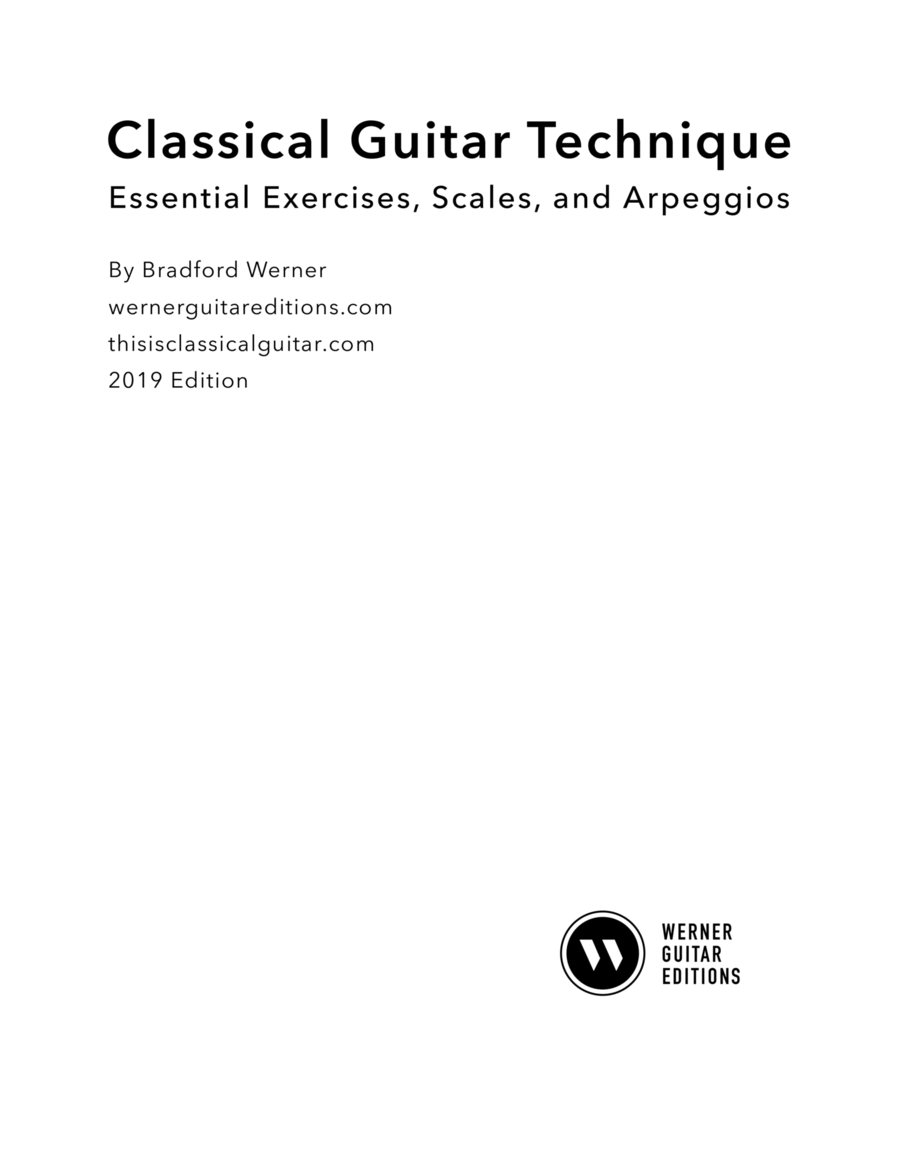Solo Guitar - Digital Download SKU: A0.866917 Composed by Bradford Werner. Instructional. Individual part. 122 pages. This is Classical Guitar #4715689. Published by This is Classical Guitar (A0.866917). Classical Guitar Technique: Essential Exercises, Scales, and Arpeggios (2019 Edition). Notation Only with Fingering, String Numbers, and Positions.122 Pages. By Bradford Werner.Includes: Practice Routines, Tips, YouTube Lessons (visit thisiclassicalguitar.com), 100 Open String Exercises, 120 Giuliani Arpeggios, Selected Scales (Major, Minor, 3rds, 6ths, Octaves, 10ths), Slur Exercises, Shifts, Finger Independence, Alignment, Stretch, Barre, Tremolo, Common Harmonics, Speed and Relaxation, and more. This book focuses on essential exercises for the development of classical guitar technique. All the exercises from the headings of the table of contents progress from easy to advanced in a progressive format. Although this is a book of exercises rather than a method, I have included many helpful tips throughout the book to aid students. As with all my materials, the video lessons are an added educational advantage.Intended for beginner to early-advanced classical guitar students (approximately RCM Toronto Grade 1-9). As a basic prerequisite students would have completed both Volume One and Two of my beginner method book series or an equivalent. There are a number of exercises in upper positions that include accidentals, therefore, additional reading experience is required if you wish to study the entire book. The inclusion of fingering, string numbers, and position marks should make the exercises easy to understand. The 100 open string exercises should be very accessible to beginners and advanced students alike.
